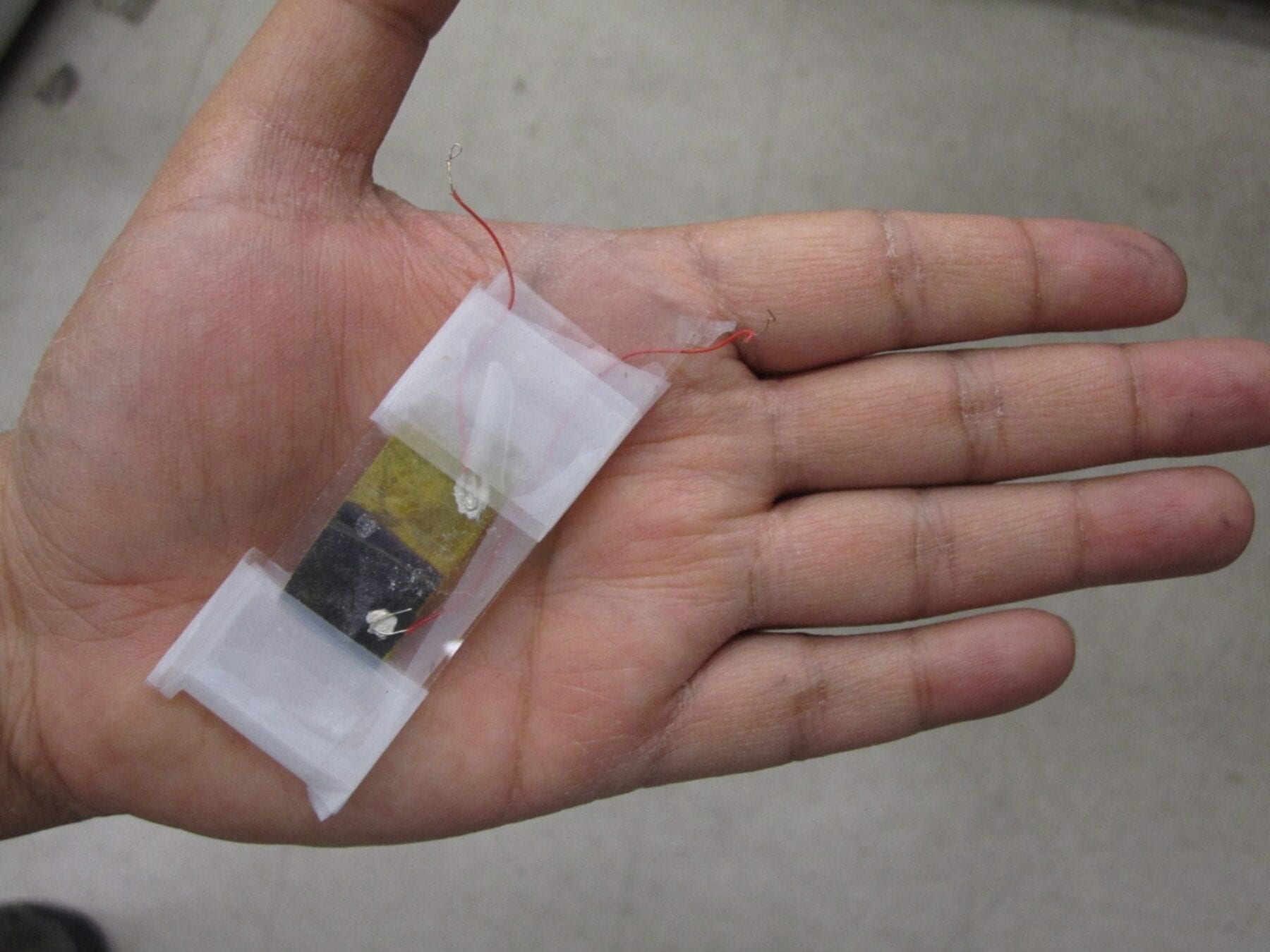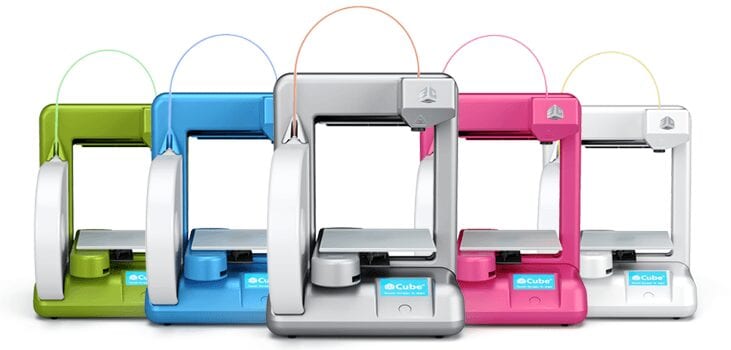
University of Utah metallurgists used an old microwave oven to produce a nanocrystal semiconductor rapidly using cheap, abundant and less toxic metals than other semiconductors.
They hope it will be used for more efficient photovoltaic solar cells and LED lights, biological sensors and systems to convert waste heat to electricity.
Using microwaves “is a fast way to make these particles that have a broad range of applications,” says Michael Free, a professor of metallurgical engineering. “We hope in the next five years there will be some commercial products from this, and we are continuing to pursue applications and improvements. It’s a good market, but we don’t know exactly where the market will go.”
Free and the study’s lead author, Prashant Sarswat, a research associate in metallurgical engineering, are publishing their study of the microwaved photovoltaic semiconductor – known as CZTS for copper, zinc, tin and sulfur – in the June 1 issue of the Journal of Crystal Growth.
In the study, they determined the optimum time required to produce the most uniform crystals of the CZTS semiconductor – 18 minutes in the microwave oven – and confirmed the material indeed was CZTS by using a variety of tests, such as X-ray crystallography, electron microscopy, atomic force microscopy and ultraviolet spectroscopy. They also built a small photovoltaic solar cell to confirm that the material works and demonstrate that smaller nanocrystals display “quantum confinement,” a property that makes them versatile for different uses.
“It’s not an easy material to make,” Sarswat says. “There are a lot of unwanted compounds that can form if it is not made properly.”
Sarswat says that compared with photovoltaic semiconductors that use highly toxic cadmium and arsenic, ingredients for CZTS photovoltaic material “are more environmentally friendly.”
Free adds: “The materials used for this are much lower cost and much more available than alternatives,” such as indium and gallium often used in semiconductors.
Making an Old Material More Quickly
Swiss researchers first invented CZTS in 1967 using another method. Other researchers discovered in 1998 that it could serve as a photovoltaic material. But until recently, “people haven’t explored this material very much,” Sarswat says. CZTS belongs to a family of materials named quaternary chalcogenides.
Without knowing it at first, Free and Sarswat have been in a race to develop the microwave method of making CZTS with a group of researchers at Oregon State University. Sarswat synthesized the material using microwaves in 2011. Free and Sarswat filed an invention disclosure on their method in January 2012, but the other group beat them into print with a study published in August 2012.
The method developed by Sarswat and Free has some unique features, including different “precursor” chemicals (acetate salts instead of chloride salts) used to start the process of making CZTS and a different solvent (oleylamine instead of ethylene glycol.)
Sarswat says many organic compounds are synthesized with microwaves, and Free notes microwaves sometimes are used in metallurgy to extract metal from ore for analysis. They say using microwaves to process materials is fast and often suppresses unwanted chemical “side reactions,” resulting in higher yields of the desired materials.
CZTS previously was made using various methods, but many took multiple steps and four to five hours to make a thin film of the material, known technically as a “p-type photovoltaic absorber,” which is the active layer in a solar cell to convert sunlight to electricity.
A more recent method known as “colloidal synthesis” – preparing the crystals as a suspension or “colloid” in a liquid by heating the ingredients in a large flask – reduced preparation time to 45 to 90 minutes.
Sarswat decided to try microwave production of CZTS when the University of Utah’s Department of Metallurgical Engineering decided to get a new microwave oven for the kitchen where students heat up their lunches and make coffee.
“Our department secretary had a microwave to throw away,” so Sarswat says he took it to replace one that had recently burned up during other lab experiments.
“The bottom line is you can use just a simple microwave oven to make the CZTS semiconductor,” Free says, adding: “Don’t do it at home. You have to be cautious when using these kinds of materials in a microwave.”
The Latest Bing News on:
Solar Cell Material
- A strategy to boost the efficiency of perovskite/organic solar cellson April 28, 2024 at 6:00 am
In recent years, researchers have been experimenting with a wide range of solar cell designs in the hope of facilitating their widespread deployment. Organic solar cells based on perovskite materials ...
- Solar Energy Newson April 26, 2024 at 5:00 pm
New High-Performance Solar Cell Material Mar. 13, 2024 — A new study reports the discovery of an entirely new stable, earth-abundant, high-performance material for solar absorbers -- the central ...
- Solar panels in the eyes: reality or distant future?on April 26, 2024 at 4:44 am
Implanting tiny solar cells in people's eyes might sound like a futuristic idea, but it's what Australian scientists are exploring. This advanced technology could greatly help those with eye diseases.
- Perovskite PV cell, module manufacturing may face material supply riskson April 26, 2024 at 1:04 am
German and Swedish researchers calculated the supply of materials to produce perovskite tandem PV at a multi-terawatt-scale, flagging the difficult supply of gold, indium and cesium, well as a need to ...
- County officials approve controversial solar farm project after hours of deliberation: 'We have an obligation'on April 25, 2024 at 7:30 pm
Supervisors from Patrick Country, Virginia, voted 3-2 on March 11 to approve the region's first utility-scale solar farm after a nearly two-hour-long public hearing that included 24 speakers.
- Born in the USA: First silicon solar cell celebrates 70th birthdayon April 25, 2024 at 11:02 am
U.S. researchers presented the first prototype of a usable solar module. The efficiency at that time was around 6%. A lot has happened since then.
- New AD/CVD petition filed against solar cells and panels from Southeast Asiaon April 25, 2024 at 8:12 am
A new antidumping/countervailing duty petition has been filed with the U.S. International Trade Commission (USITC) and the Dept. of Commerce concerning ...
- CESI Solar Cells Fuels the Satellites of the Global Interneton April 24, 2024 at 6:17 am
MILAN, ITALY / ACCESSWIRE / April 24, 2024 / The Italian group CESI has secured a contract, with options valued at over one hundred million euros over five years, with ...
- Researchers achieve monumental breakthrough with solar cells made from living material — here's how it workson April 24, 2024 at 3:15 am
"This green PV technology will be the future sustainable solution for solar power generation." Researchers achieve monumental breakthrough with solar cells made from living material — here's how it ...
- Polymer Solar Cells Market: Poised for a 21.5% Surge by 2027 – Powering a Sustainable Futureon April 21, 2024 at 11:39 pm
The global polymer solar cell market is poised for explosive growth, projected to reach a staggering US$ 290 million by 2027 with a CAGR of 21.5%. This presents a groundbreaking opportunity for ...
The Latest Google Headlines on:
Solar Cell Material
[google_news title=”” keyword=”Solar Cell Material” num_posts=”10″ blurb_length=”0″ show_thumb=”left”]
The Latest Bing News on:
CZTS semiconductor
- Taiwan Semiconductor Manufacturing Co Ltd 2330on April 22, 2024 at 4:59 pm
We sell different types of products and services to both investment professionals and individual investors. These products and services are usually sold through license agreements or subscriptions ...
- ON Semiconductor Corp ONon April 22, 2024 at 4:59 pm
We sell different types of products and services to both investment professionals and individual investors. These products and services are usually sold through license agreements or subscriptions ...
- Should You Buy Taiwan Semiconductor Stock Now?on April 20, 2024 at 9:36 am
Fool.com contributor Parkev Tatevosian reviews Taiwan Semiconductor Manufacturing's (NYSE: TSM) latest quarterly earnings. Before you buy stock in Taiwan Semiconductor Manufacturing, consider this ...
- Why Taiwan Semiconductor Stock Is Up Todayon April 8, 2024 at 7:40 am
Chipmaker Taiwan Semiconductor Manufacturing (NYSE: TSM) is planning a major Arizona expansion, backed by billions in support from the U.S. government. Investors appear pleased with the terms of ...
- 7 Standout Semiconductor Stocks to Buy in Aprilon April 8, 2024 at 3:58 am
That’s why it’s a good idea to consider semiconductor stocks to buy in April. Semiconductors are tiny but powerful. They play an important role in powering smartphones, laptop computers ...
- Why Taiwan Semiconductor Stock Is Up Todayon April 8, 2024 at 3:41 am
A lack of geographic diversity is one of the biggest bearish arguments about Taiwan Semiconductor, and the expansion will help alleviate some of those concerns. You’re reading a free article ...
- 5 Solid Semiconductor Stocks to Buy on Rebounding Saleson April 5, 2024 at 1:17 am
The semiconductor industry is having a bumpy ride. Sales have been steadily making a rebound but the challenges are far from over. However, the future holds promise given the high demand for chips.
- Why Taiwan Semiconductor Manufacturing Stock Rallied Thursday Morningon April 4, 2024 at 5:07 am
The company reported that its personnel were safe and damage was minimal. Taiwan Semiconductor is a key player in the artificial intelligence (AI) revolution, fabricating processors for the ...
- My View: Biden's latest visit shows why AZ is the semiconductor industry's next big thingon March 31, 2024 at 5:00 pm
President Joe Biden's was back in the Grand Canyon state recently to laud Arizona as a semiconductor hub, this time on March 20 to announce a historic agreement with Intel that will drive billions ...
- Taiwan Semiconductor: A Dirt-Cheap AI Playon March 28, 2024 at 12:32 pm
Taiwan Semiconductor Manufacturing Company Limited offers an attractive value proposition in the AI market. Taiwan Semiconductor is the largest contract chip manufacturer in the world, holding a ...
The Latest Google Headlines on:
CZTS semiconductor
[google_news title=”” keyword=”CZTS semiconductor” num_posts=”10″ blurb_length=”0″ show_thumb=”left”]











